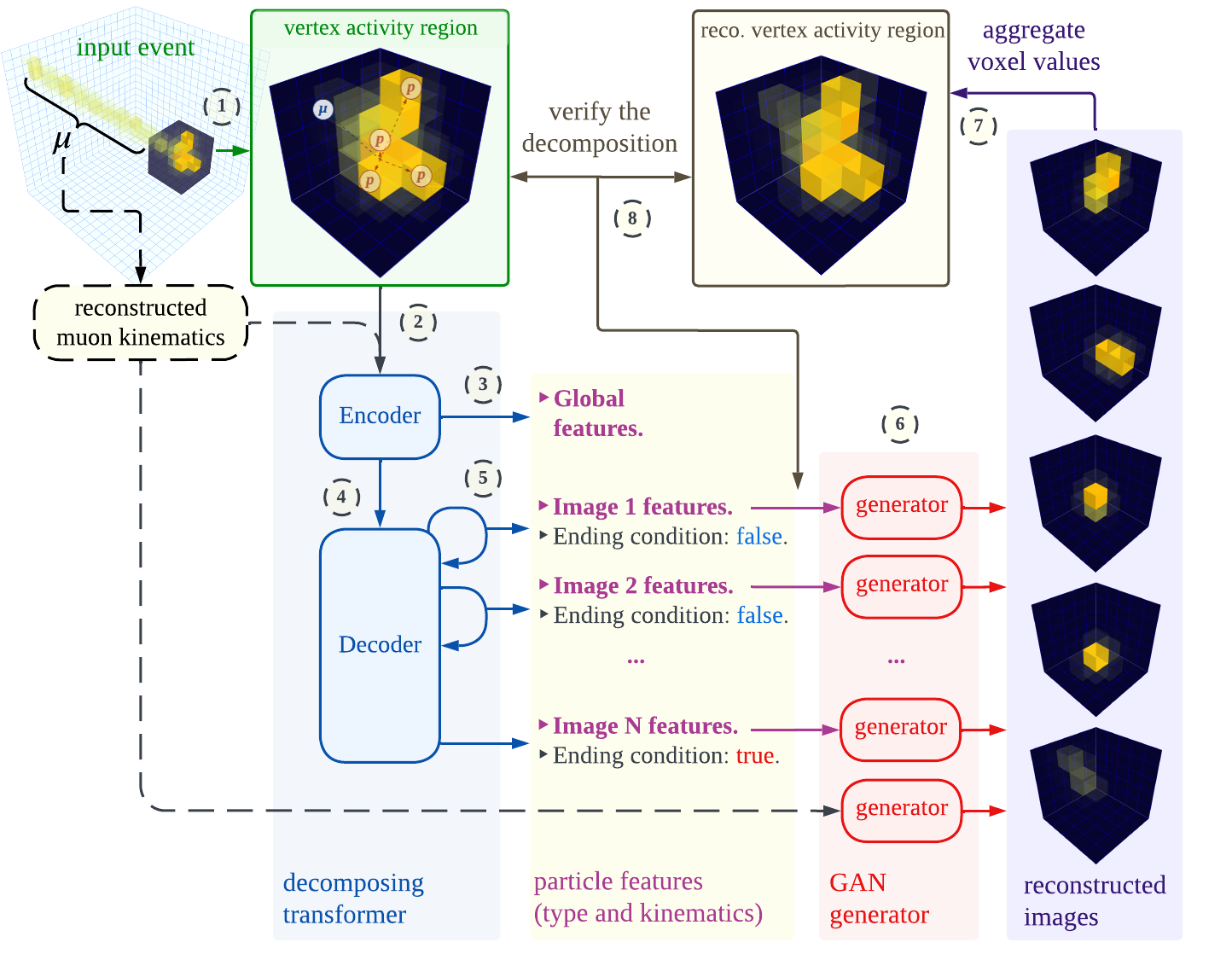Deep-learning-based decomposition of overlapping-sparse images: application at the vertex of neutrino interactions
Image decomposition plays a crucial role in various computer vision tasks, enabling the analysis and manipulation of visual content at a fundamental level. Overlapping images, which occur when multiple objects or scenes partially occlude each other, pose unique challenges for decomposition algorithms. The task intensifies when working with sparse images, where the scarcity of meaningful information complicates the precise extraction of components. This paper presents a solution that leverages the power of deep learning to accurately extract individual objects within multi-dimensional overlapping-sparse images, with a direct application in high-energy physics with decomposition of overlaid elementary particles obtained from imaging detectors. In particular, the proposed approach tackles a highly complex yet unsolved problem: identifying and measuring independent particles at the vertex of neutrino interactions, where one expects to observe detector images with multiple indiscernible overlapping charged particles. By decomposing the image of the detector activity at the vertex through deep learning, it is possible to infer the kinematic parameters of the identified low-momentum particles - which otherwise would remain neglected - and enhance the reconstructed energy resolution of the neutrino event. We also present an additional step - that can be tuned directly on detector data - combining the above method with a fully-differentiable generative model to improve the image decomposition further and, consequently, the resolution of the measured parameters, achieving unprecedented results. This improvement is crucial for precisely measuring the parameters that govern neutrino flavour oscillations and searching for asymmetries between matter and antimatter.
PDF Abstract
